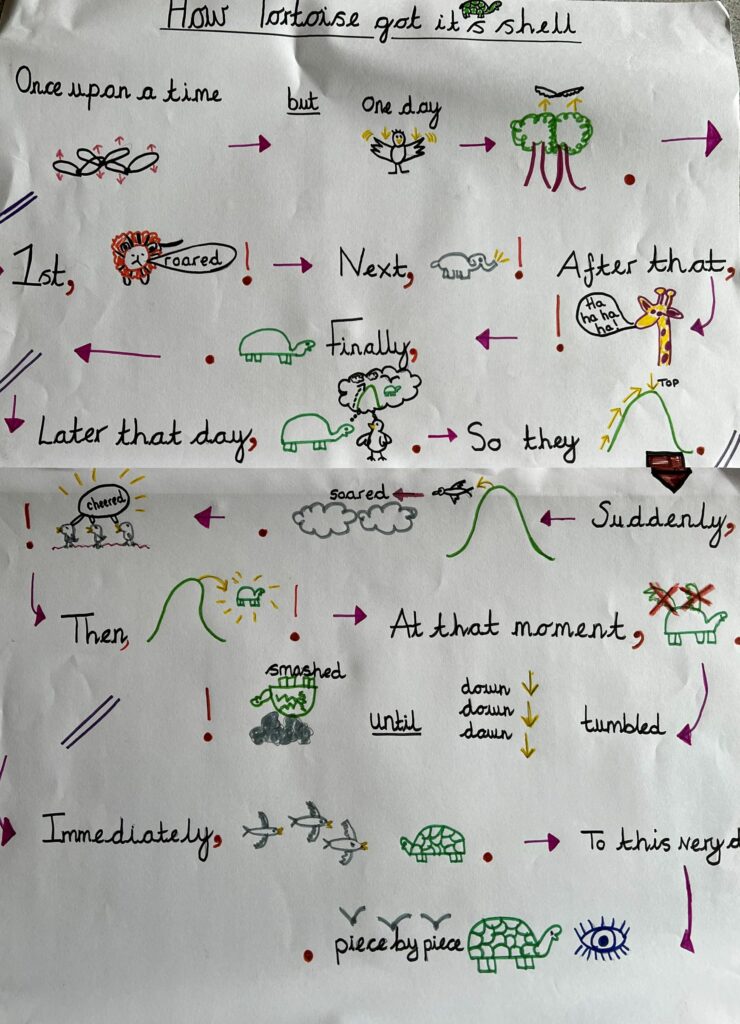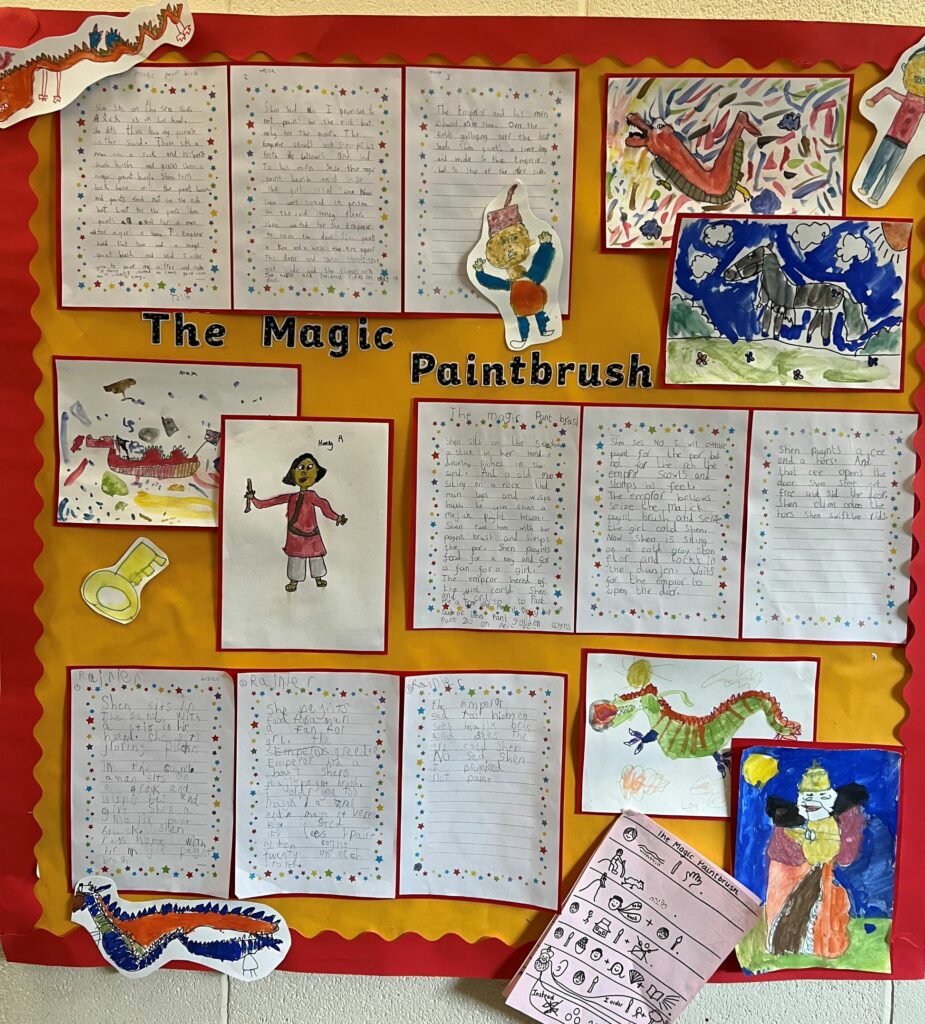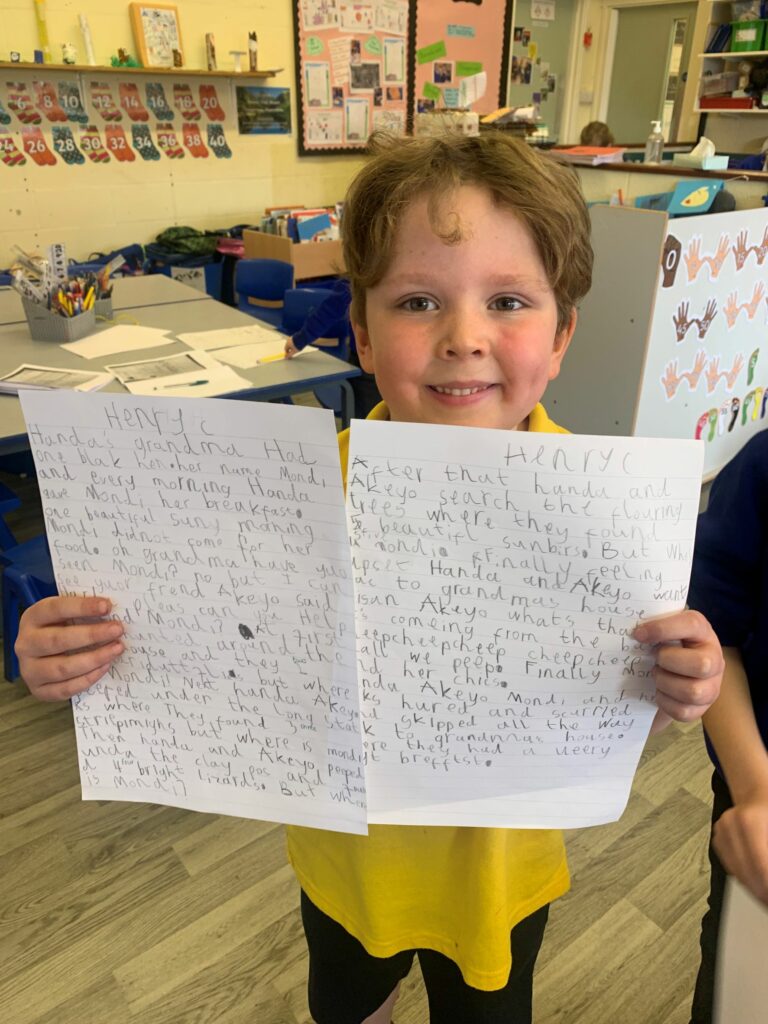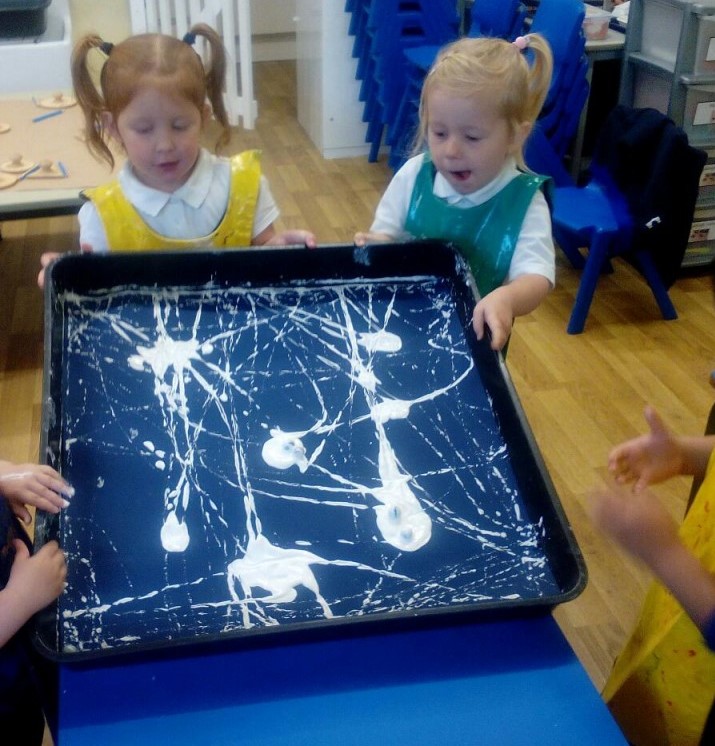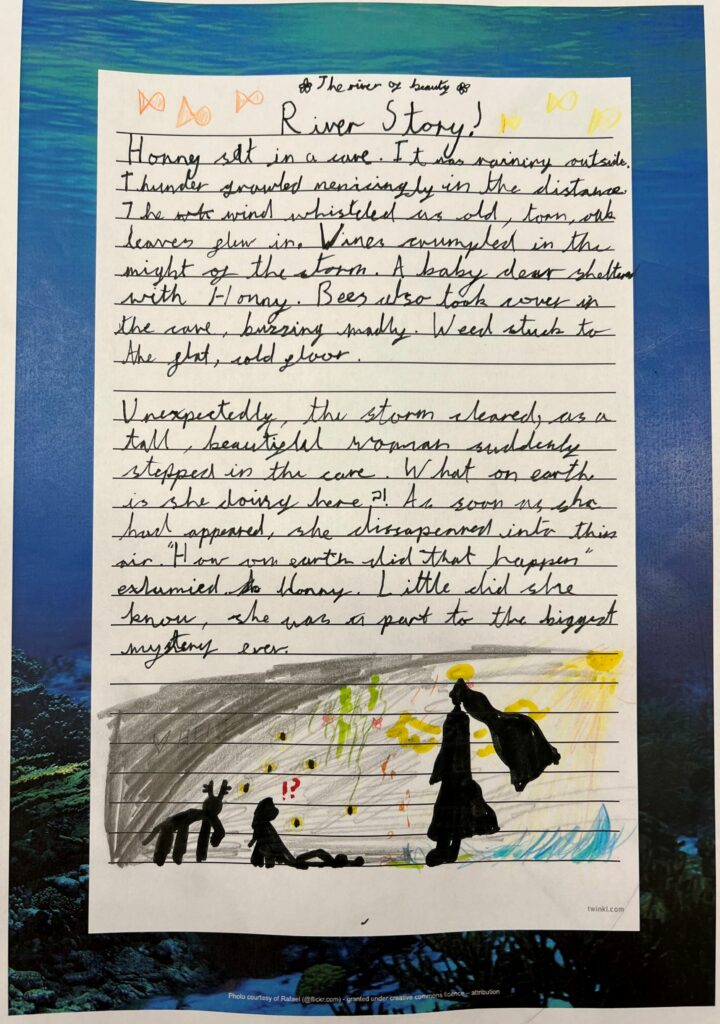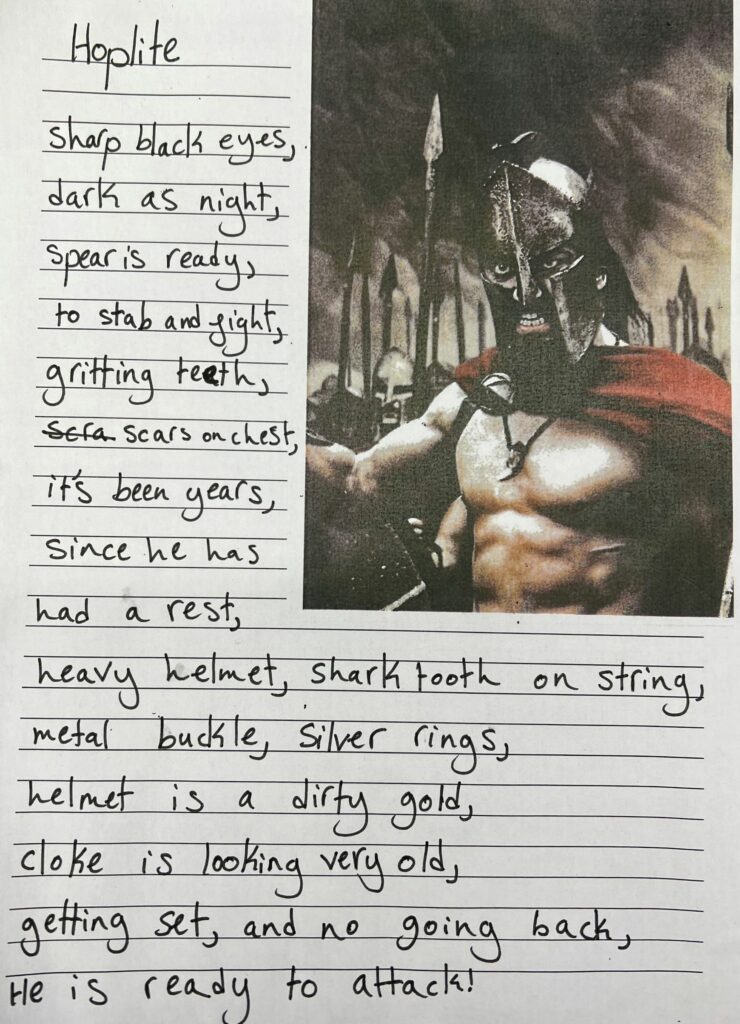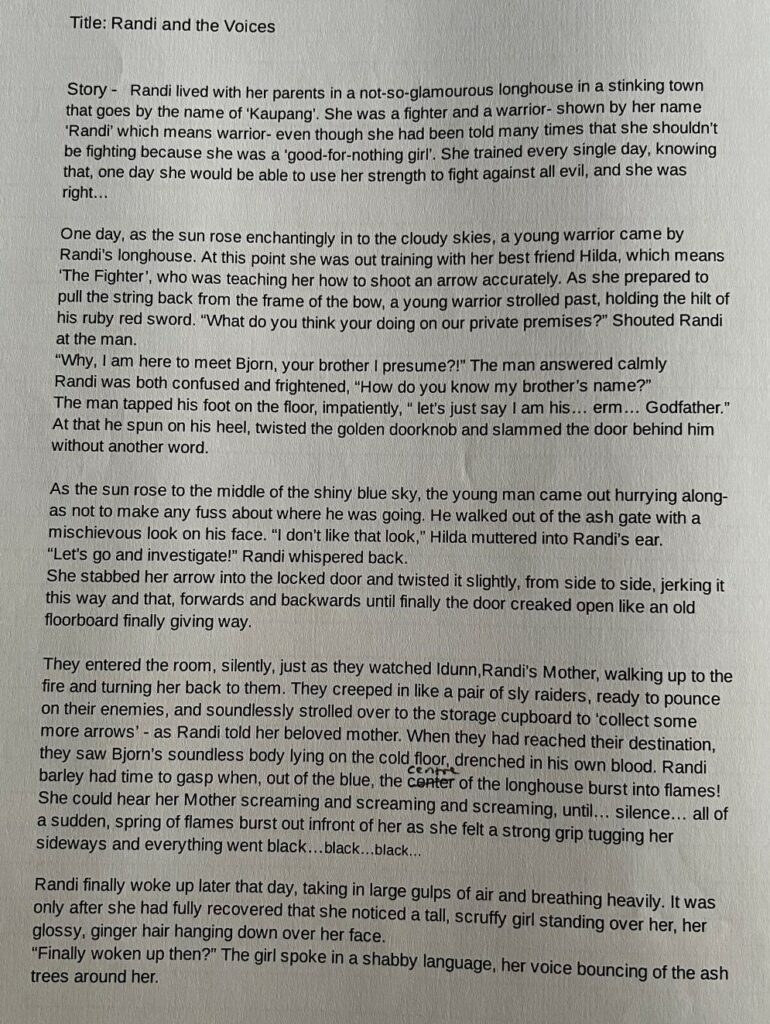St.Mary’s CE Primary School recognises the importance of children writing for pleasure and to inform. We inspire the pupils to take pride in their writing, to write clearly and accurately and adapt their language and style for a range of contexts. We aim for every child to develop a fluent, legible and coherent writing style. At our school, we
provide a broad and balanced literacy curriculum which encompasses the two core competencies of writing – transcription (spelling and handwriting) and composition (structuring and articulating ideas) – as set out in the National Curriculum (2014) guidelines, so they are able to communicate and structure their ideas in a correct and coherent manner.
Intent
The pupils at St.Mary’s CE Primary School will:
- Choose to write for pleasure
- Understand that writing is an essential skill for everyday life
- Write in creative and imaginative ways
- Write independently
- Have a “love” of words
- Experience a range of purposes and forms of writing
- Communicate in writing clearly, confidently and appropriately, demonstrating an awareness of a variety of purposes and audiences
- Be inspired by a broad and balanced cross curricular curriculum with Literacy at the centre
- Have a fluent joined handwriting style (see the Handwriting Policy)
- Confidently segment words and have strategies to remember tricky words (see the Reading and Phonics Policy)
- Present their writing to a high standard at each of the stages of the writing process: planning, drafting, editing and re-editing
‘I write cards, messages, envelopes, notes and stories. I made my story into a book so the rest of the class could read it. I used watercolours for the illustrations. Some children even took it home to read! My teacher sometimes helps me with my ideas but I usually use my imagination or books like Supertato.’ Y1 pupil
‘We’ve been writing escape stories. It was exciting because we could choose our characters, where they were escaping from and how they were going to escape. Our model text gave us ideas how to start our sentences.’ Y3 pupil
Talk for Writing
To support our teaching of writing we use the Talk for Writing principles where children move from imitation to innovation to independent application and each stage can be adapted to suit the needs of every learner.
The Talk for Writing approach enables children to read and write independently for a variety of audiences and purposes within different subjects. A key feature is that children internalise the language structures needed to write through ‘talking the text’, as well as close reading. The approach moves from dependence towards independence, with the teacher using shared and guided teaching to develop the ability in children to write creatively and powerfully. It starts with enjoying and sharing stories. Throughout the school, we place a strong emphasis on children reading stories and enjoying a range of literature. Through regular reading, we want children to build up an extensive and rich vocabulary for use in their own writing.
We underpin our English work by establishing a core reading spine of quality fiction, poetry and non-fiction that all children experience and draw upon. Imaginative units of work are developed to create a whole-school plan that is refined over the years and adapted for each unique class.
Talk for Writing is powerful because it enables children to imitate the language they need for a particular topic orally before reading and analysing it and then writing their own version. It is built on three stages of teaching:
1) Imitation – the children learn a text and the language they need
2) Innovation – the children adapt the model text with ideas of their own
3) Invention – the children create their own text using the language and skills that the model taught them.
During the initial ‘imitation‘ stage of Talk for Writing, a text (fiction and non-fiction) is introduced and read to the children. Together they learn to tell the story off by heart. To help them remember the text a multi-sensory approach is used. They retell a text with expression and actions and use a visual story map to support their retelling. As children learn the text word for word, they build up a bank of interesting vocabulary, phrases and types of plot which they can then use in their own writing. The principle is that if a child can tell a story, they will be able to write a story.
Once the story is learnt, children are encouraged to adapt it. At this ‘innovation‘ stage, children make the story their own. They could start with a simple change of character or for older children it may involve telling the story from a different view point. They will make changes to their story map and rehearse retelling their innovated story orally. They will then write out the innovated story in manageable sections and will receive feedback from the teacher. There is an opportunity to respond to this marking before they go on to write the next section. This very supportive and structured approach allows children to gain confidence and know what they need to do in order to get better.
The final stage is the ‘invention‘ stage where the children use all the skills they have learnt to write an independent piece. There is the freedom to draw upon their own ideas and experiences, or they can ‘hug closely’ to the shared text should they need to.
What can you do at home to help?
‘Talk for Writing’ begins and ends with enjoying stories and reading books. We encourage all parents to read with their children every day whatever their age or ability. Children who are read to regularly before coming to school are the most likely to succeed in education.
Children who read for pleasure are also more likely to succeed as writers because of the way in which reading develops language development.
‘My teacher helps to improve my writing by using feedback stations or voice feedback on the chromebooks. Feedback stations have a different focus for each table. He also records his feedback and highlights parts to improve.’ Y6 pupil
Handwriting
At St.Mary’s CE Primary School, we encourage children to develop a neat, coherent, comfortable handwriting style. Pupils will be expected to use fluent legible and eventually, speedy handwriting. In the Early Years, gross motor and fine motor development is an important part of the curriculum each day, for example, dough gym. Those struggling to grasp handwriting skills are supported by experienced handwriting teachers. Also, as required by the national curriculum, left-handed pupils will receive the proper teaching to meet their needs as they develop writing skills.
Spelling, Punctuation and Grammar
If children are to develop as competent readers and writers, it is vitally important that they have a secure understanding of the spelling, punctuation and grammar system of the English language.
The national curriculum guidance for Spelling, Punctuation and Grammar (SPaG) aims to ensure that all pupils:
- Understand the vocabulary they need to discuss their reading, writing and spoken language.
- Learn the correct grammatical terms in English and that these terms are integrated within their work.
- Are able to read and spell with accuracy and confidence, the statutory words lists from their applicable year group.
Spelling, Punctuation and Grammar is embedded in daily English lessons through starters as well as taught discrete sessions. Pupils are given the opportunity to use and apply skills developed in SPaG within their written work to enable them to express themselves clearly, accurately and effectively. Pupils in Year 2 and Key Stage 2 follow Read Write Inc Spell to ensure a progression and consistency in learning to spell.
Children are given the opportunity to explore a variety of sentence structures using Alan Peat’s Exciting Sentences programme. Each year they will build their sentence repertoire and can draw on this learning when composing their own writing.

 015242 71334
015242 71334 admin@stmarys-kl.cumbria.sch.uk
admin@stmarys-kl.cumbria.sch.uk

